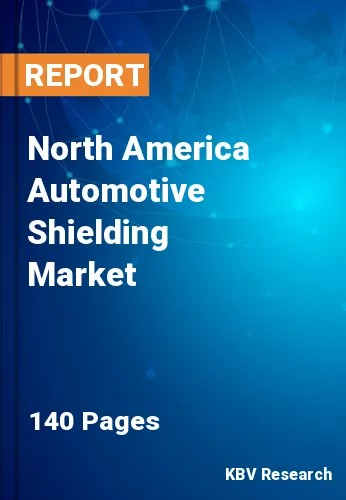The North America Automotive Shielding Market would witness market growth of 4.1% CAGR during the forecast period (2023-2030).
In response to the industry's emphasis on lightweighting, researchers and manufacturers are developing innovative shielding materials that offer adequate protection while being lightweight. Advanced composites, conductive polymers, and nanomaterials are being explored for their potential to achieve this balance. Innovations go beyond traditional shielding approaches, focusing on creating multifunctional materials that serve additional purposes. For example, integrating shielding properties into materials that provide structural support or thermal management can reduce weight and improve efficiency.
In addition, multifunctional materials that combine structural support with shielding capabilities are gaining attention. For instance, carbon fiber composites are being explored for their lightweight and high-strength properties and their inherent conductivity. Integrating conductive layers within structural components can serve a dual purpose, providing structural integrity and effective EMI/RFI shielding. Integrating shielding functionalities into materials with primary roles in structural components can contribute significantly to weight reduction. This innovation aligns with the broader industry trend of lightweight, where reducing vehicle weight enhances fuel efficiency and overall performance. Manufacturers can achieve efficiency gains by consolidating functions within a single material without compromising safety or shielding effectiveness.
As consumers in North America become more aware of the importance of vehicle safety, performance, and advanced technologies, vehicles are increasingly expected to be equipped with robust shielding solutions. In 2015, Canada implemented emissions and fuel standards that were harmonized with the US Tier 3 program. From 2017 to 2025, passenger vehicles are obligated to achieve a 5% annual reduction in CO2-equivalent per mile, as stipulated by the Passenger Automobile and Light Truck GHG Regulations of Canada. Growing vehicle sales and expanding fuel efficiency regulations in North America will boost the production of new vehicles, which will increase the demand for automotive shielding. Therefore, these factors will boost the expansion of the regional market.
The US market dominated the North America Automotive Shielding Market by Country in 2022 and would continue to be a dominant market till 2030; thereby, achieving a market value of $4.3 billion by 2030. The Canada market is experiencing a CAGR of 6.5% during (2023 - 2030). Additionally, The Mexico market would exhibit a CAGR of 5.6% during (2023 - 2030).
Based on Shielding Type, the market is segmented into Heat Shielding, and Electromagnetic Induction shielding. Based on Application, the market is segmented into Electromagnetic Compatibility, Electronic Control Modules, Infotainment Systems, Advanced Driver Assistance Systems, and Others. Based on Vehicle, the market is segmented into Passenger, and Commercial. Based on Material, the market is segmented into Copper, Plastics, Aluminum, Foam, Nickel, Stainless Steel, and Others. Based on countries, the market is segmented into U.S., Mexico, Canada, and Rest of North America.
Free Valuable Insights: The Global Automotive Shielding Market is Predict to reach USD 28.8 Billion by 2030, at a CAGR of 4.4%
The market research report covers the analysis of key stake holders of the market. Key companies profiled in the report include Dana Incorporated, Tenneco, Inc., Henkel AG & Company, KGaA, Morgan Advanced Materials plc, 3M Company, Parker Hannifin Corporation, RTP Company, Inc., Autoneum Holding AG, Tech Etch, Inc. and Marian, Inc.
By Shielding Type
By Application
By Vehicle
By Material
By Country
Our team of dedicated experts can provide you with attractive expansion opportunities for your business.

